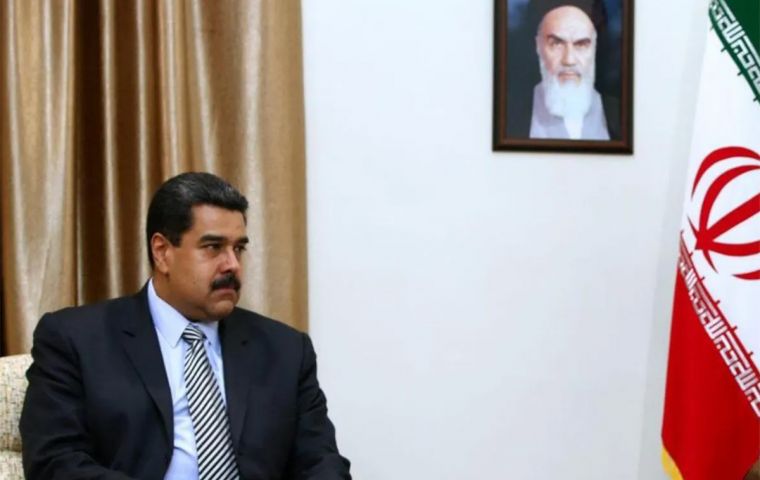MercoPress. South Atlantic News Agency
Venezuelan leader announces trip to Iran sometime next year
 Venezuela's oil output is coming back with a little help from Maduro's friends
Venezuela's oil output is coming back with a little help from Maduro's friends Venezuelan President Nicolás Maduro has announced he would visit strategic ally Iran sometime next year following an invitation from his Iranian colleague Ebrahim Raisi to discuss further cooperation between the two countries.
Maduro has restricted his traveling abroad to friendly countries such as Cuba over the past few years, presumably out of safety concerns. But last Sunday he admitted he had spoken twice on the telephone with Raisi and that he would accept the invitation because “Arab countries love Venezuela.”
“I am going to Teheran very soon, for a visit that President Raisi offered me, so that we meet in person, to hold conversations and sign new agreements,” Maduro said in an interview with Al Mayadeen which was also broadcast on Venezuelan state television.
During the interview Maduro also praised Iran’s Supreme Leader Ayatollah Ali Khamenei, saying he admires the head of state as “a man of great wisdom and great intelligence.”
Venezuela is under stiff US sanctions that have impacted the country’s crude oil exports, particularly under former US President Donald Trump. The US has also imposed sanctions on Iran in a standoff over its nuclear program and efforts to revive a 2015 pact with world powers. Negotiations are underway in Vienna to save the so-called Joint Comprehensive Plan of Action, which has been unraveling since the US pulled out of the deal in 2018 and Iran responded by increasing it nuclear activities.
Earlier this year an Iranian destroyer and support vessel sailed into the Atlantic Ocean, with US media reports citing anonymous American officials as saying the ships were bound for Venezuela.
In this scenario, Venezuela's state-run oil company Petroleos de Venezuela (PDVSA) has almost doubled its crude output thanks to technical help from Iran. First it won help from small drilling firms by rolling over old debts and later it secured steady supplies of a key diluent from the Asian partner in disgrace.
Venezuela is reportedly reaching exportable amounts of crude in a surprising turn of events following years of decadence. In November, it produced 824,000 barrels per day (bpd), 90% above figures from the same month a year before.
Nevertheless, it is yet unclear whether this trend will hold, as years of unpaid bills, mismanagement and US sanctions have restricted its access to drilling equipment, foreign investment and potential customers.
Oil Minister Tareck El Aissami described the current situation as a “great victory,” despite the numbers still being short of the 1.28 million bpd target. While oilfields are being reopened, oil experts said PDVSA has done all it can and further gains might be capped by a lack of additional rigs and functioning upgraders for its tar-like crude.
The main turning point this year came from a swap deal between state-run firms PDVSA and National Iranian Oil Company (NIOC) that began in September. It proved crucial for generating exportable grades from the extra-heavy crude produced at Venezuela’s top region, the Orinoco Belt. Hard-currency proceeds from domestic fuel sales and higher oil exports to Asia have also allowed PDVSA to amortize some debts with service companies and settle overdue debts with a promise of future work and permits that allowed some domestic firms to operate workover rigs.
By mid-December, there were a total of 47 workover and maintenance rigs active in the Orinoco Belt and 29 more in other regions, according to a PDVSA internal document Reuters claimed to have accessed. That same report showed 19 others that were inactive. No active drilling rigs, which are needed for building output capacity, were reported.
Venezuela reported annual crude production of 569,000 bpd last year and its exports averaged 627,000 bpd as PDVSA drained flush inventories. Independent analysts have agreed production has bounced back. In Eastern Venezuela, two crude projects that partially restored output – Petro San Felix and Petrodelta – were looking for financing to continue increasing production.




Top Comments
Disclaimer & comment rulesCommenting for this story is now closed.
If you have a Facebook account, become a fan and comment on our Facebook Page!